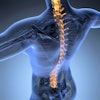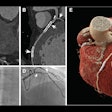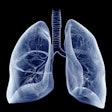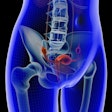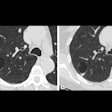Dear CT Insider,
For all its value in diagnosing coronary artery disease, CT has limitations when it comes to determining whether a CT-detected coronary stenosis is actually impairing cardiac function enough to warrant revascularization.
Figuring out whether functional disease is present in patients with suspected heart disease requires the use of other tests such as myocardial perfusion SPECT, stress testing, conventional angiography -- or, optimally, a technique based on computational fluid dynamics called fractional flow reserve (FFR). Traditional FFR requires invasive angiography and catheterization. But not FFR-CT, which uses software and CT data to calculate flow noninvasively.
FFR-CT has already shown promise in a couple of early trials, but a new multicenter study presented at this week's Transcatheter Cardiovascular Therapeutics meeting validates the technology more rigorously and on a larger scale. Researchers from 10 institutions around the world looked at FFR-CT in more than 250 stable patients with coronary disease, comparing the results to standard CT and to conventional invasive FFR analysis. See what they found in this issue's Insider Exclusive, brought to you as a subscriber before it's made available to other AuntMinnie.com members.
In other CT news, concerns about radiation dose have led to concerted efforts to get exposure levels under control in the U.S., Europe, and Asia -- and in the Middle East as well. A hospital in Dubai, for example, employed a variety of dose-reduction technologies to see how far it could go in reducing unnecessary exposure in more than 9,000 patients. Their results, detailed in a story by AuntMinnie.com contributing writer Rabia Mughal, are impressive.
Oh, and in case you missed it, CT just figured prominently in this year's Minnies awards, grabbing radiology's top honors for Best New Radiology Device, Most Influential Radiology Researcher, Scientific Paper of the Year, and more. Get the whole story here.
Radiology's go-to modality is even making waves in breast cancer screening, where CT's measurements of breast density were found to be equivalent to those of mammography, with higher diagnostic confidence. Click here to learn more in an article by associate editor Kate Madden Yee.
Finally, in a story by senior editor Erik L. Ridley, Chinese radiologists found that 320-detector-row CT was a great substitute for digital subtraction angiography for the detection of cerebral aneurysm. Look for the results in more than 200 patients here.
For the rest of the news in CT imaging, we invite you to scroll through the stories below -- all in your CT Digital Community. And please accept our best wishes for a truly horrifying Halloween.
